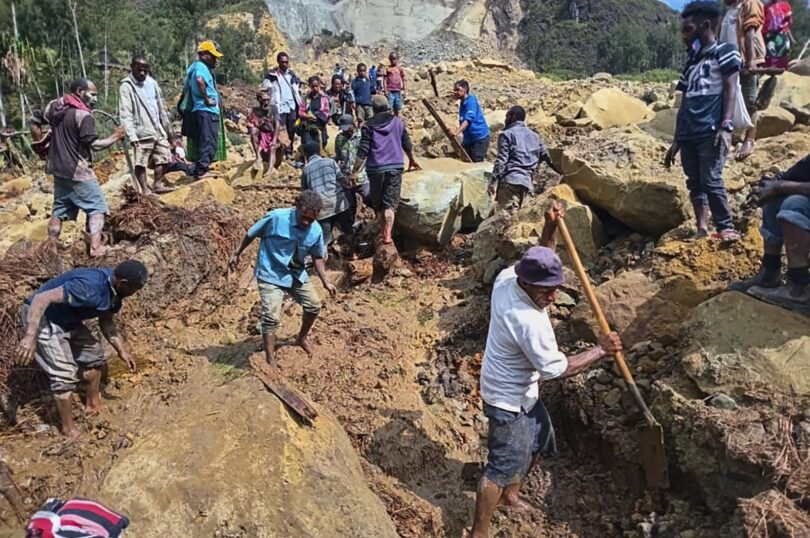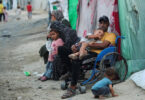PORT MORESBY (AFP) : More than 670 people may have died in a massive landslide that hit rural Papua New Guinea earlier Friday, a U.N. official said Sunday.
Aid, rescue workers and local villagers braved perilous conditions in their desperate search for survivors.
“There are an estimated 150-plus houses now buried,” said U.N. migration agency official Serhan Aktoprak, adding that “670-plus people are assumed dead.”
“The situation is terrible with the land still sliding. The water is running and this is creating a massive risk for eveyrone involved,” added Aktoprak, who is based in Port Moresby.
The once-bustling hillside village in Enga province was almost completely obliterated when the landslide struck in the early hours of Friday morning, burying scores of homes and the people sleeping inside.
“People are using digging sticks, spades, large agricultural forks to remove the bodies buried under the soil,” Aktoprak said.
More than 1,000 people have been displaced by the catastrophe, he added, with food gardens and water supplies almost completely wiped out.
Aid agencies and local leaders initially feared between 100 and 300 people may have perished in the disaster.
The death toll was revised up as disaster workers on the ground realized more people were living in the village than initially estimated, Aktoprak said.
Disaster zone
The village was home to more than 4,000 people, serving as a trading post for alluvial miners, who panned for gold in the highlands region.
Five bodies had been pulled from the debris by Saturday night.
Tribal fighting had broken out along the only remaining route into the disaster zone.
While Aktoprak said the violence was “not related to the landslide,” Papua New Guinea’s military was providing a “security escort” to ensure the safe passage of aid convoys.
At some points, the landslide – a mix of car-sized boulders, uprooted trees and churned-up earth – was thought to be 8 meters (26 feet) deep.
Locals said the landslide may have been triggered by heavy rains that have saturated the region in recent weeks.
Papua New Guinea has one of the wettest climates in the world, according to the World Bank, with the heaviest downpours concentrated in the humid highland regions.
Images showed barefoot workers shifting the earth with shovels and axes, while others picked through the mangled piles of corrugated iron that once provided shelter.
Much-needed heavy machinery was expected to begin arriving at the site on Sunday.







